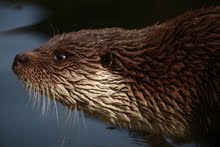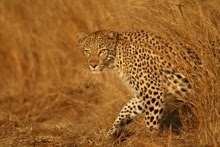Lots of people that come to the Alpine Birds blog from google are - quite obviously - looking for info on Alpine Birds. And I love to talk about the places I love going birding. So I would like to try get a new blog series going about great birding spots in the Alps - well, at the the places that I like to go looking for birds, or just to appreciate nature. Here is the first one in the series:
Inzinger Gaisau
Wintertime in the Gaisau, view from the the little wooden bridge.
Inzing is a small, quaint village just 15km west of Innsbruck. If you go to the western edge of town and head down toward the Inn, there is a little dirt track (see google map below) that will lead you down to the Inzinger Gaisau - a series of ponds, riparian woodland, reedbeds, open meadows and great views up to the mountains.
This combination of various habitats makes for a surprisingly diverse bird assemblage and the Inzinger Gaisau really stands out as one of those places where you never know quite what is going to turn up.
Black Kites have recently started breeding in the Inzing/Petnau area
Riparian woodland - the broadleaved woodland along the River Inn, and in the Gaisau itself is great for small warblers, particularly in spring and early summer. Keep a look out for Icterine Warbler (Gelbspötter), Chifchaf (Zilzalp), Willow Warbler (Fitis), Wood Warbler (Waldlaubsänger), and Blackcap (Mönchsgrasmücke). Keep an ear open for Lesser Spotted Woodpecker (Kleinspecht) and both Short-toed Treecreeper (Gartenbaumläufer) and Eurasian Treecreeper (Waldbaumläufer) breed here - listen out for their Kingfisher-like calls, but dont be too surprised if it is a Kingfisher (Eisvogel) that is flying past.
Fieldfares are very common in spring, breeding in the woodlands and feeding in the open meadows
Fairly large numbers of Fieldfare (Wacholderdrossel) breed in the riparian woodland, but they are mostly seen foraging in the open fields (recently ploughed or short meadows). This woodland edge is also great for the tits: Marsh Tit (Sumpfmeise), Great Tit (Kohlmeise), Coal Tit (Tannenmeise), Longtailed Tit (Schwanzmeise) and the gorgeous little Blue Tit (Blaumeise). The tits are probably best found near the fishermen's hut on the southern side of the main pond where the habitat diversity is high.
If you go over the little wooden bridge at the eastern side of the pond, you can skirt around the northern waters edge with great views over the meadows and fields to your right, and the reedbeds and open water to your left. In the meadows, keep a look out for the local Whinchats (Braunkehlchen), and if you are lucky, you can pick up a Eurasian Hoopoe (Wiedehopf) or a Black Kite (Schwarzmilan), both of which have started breeding in the immediate area in the last couple of years.
Tufted Ducks now breed regularly on the pond
On the pond itself, there are mostly just Mallards (Stockente) and Coots (Blässhuhn). Last year the Tufted Duck (Reiherente) and Teal (Krikente) bred successfully. Up until recently, the Little Grebe (Zwergtaucher) also bred here. At migration time, keep a look out for Goosander/Common Merganser (Gänsesäger), Garganey (Knäckente), Pochard (Tafelente), Shoveler (Löffelente), and Wigeon (Pfeifente).
With a huge pot of luck, you might see a Great Cormornat (Kormoran), but it seems the local government supports the shooting of them so they are very rare here. If you do find one, you are likely to find them very very shy, especially if you have a tripod with you.
About midway up the pond on the northern side, there is a open patch of flooded grassland/reedbed (only in spring and summer, for it is cut in autumn). If you are there in the late afternoon, keep an ear open for Moorhen (Teichhuhn) and Water Rail (Wasserralle) - recently I have heard both Moorhen and Water Rail from this reed patch, and from the main reedbed at the top (western) end of the main pond.
Reed Bunting, a summer breeding visitor
The main reedbed area at the top of the pond (western side) is also a good spot for Marsh Warbler (Sumpfrohrsänger), the summer-abundant Reed Bunting (Rohrammer), and the shy Teal (Krickente). At migration time, keep a look out for Green Sandpiper (Waldwasserläufer), Common Snipe (Bekassine), and an ear open for European Reed Warbler (Teichrohrsänger).
Green Sandpiper, a unusual but fairly regular passage migrant
Heading further west around the woodland patch, there is a little path that leads up and over the railway line. It is illegal in Austria to cross railway lines so please do not do it - it is dangerous. On the other side of the railway line is another reed bed patch, and open fields where large flocks of migrating Yellow Wagtail (Schafstelze) and Skylark (Feldlrche) gather in Autumn, and Redfooted Falcons (Rotfussfalk) are often seen on passage in early spring.
Cockchafer (Maikäfer) are very common in May, aka Redfooted Falcon food
Wintertime is rather quite for birds in the Inzinger Gaisau, but one can pick up large flocks of Goldfinch (Stieglitz) and Siskin (Erlenzeisig), particularly in early winter. The Bramblings (Bergfink) move through on mass in late winter.
Best time to go: Spring and Autumn Migration
Interesting species: Icterine Warbler (migr), Black Kite (br), Reed Bunting (br), Teal (br), Water Rail (br), Goosander (?)
How to get there: go to the google map, click on the P(arking) symbol and say "to here". type in your starting location and google maps will do it all for you. The Inzinger Gaisau is approximately 20 minutes from Innsbruck.
Happy birding,
Dale Forbes


















































.jpg)



.jpg)








.jpg)


